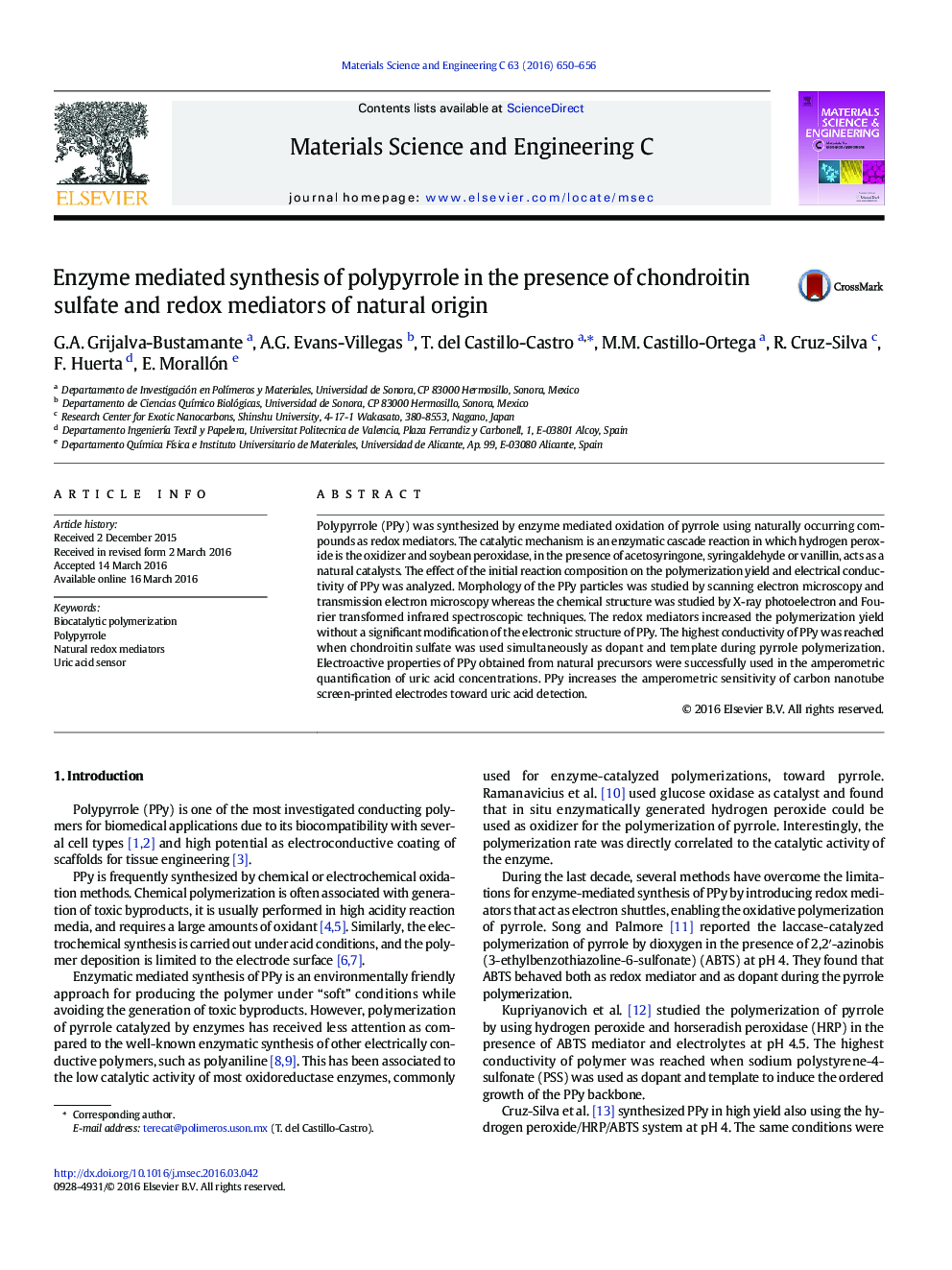| Article ID | Journal | Published Year | Pages | File Type |
|---|---|---|---|---|
| 1428059 | Materials Science and Engineering: C | 2016 | 7 Pages |
•A new method of pyrrole polymerization using naturally occurring redox mediators and doping agents was studied.•The catalytic efficiency of different redox mediators toward pyrrole oxidation was evaluated.•Two different naturally occurring polymers were studied as bifunctional steric stabilizer/doping agents.•Polypyrrole improves the amperometric response of carbon nanotube screen printed electrodes toward uric acid sensing.
Polypyrrole (PPy) was synthesized by enzyme mediated oxidation of pyrrole using naturally occurring compounds as redox mediators. The catalytic mechanism is an enzymatic cascade reaction in which hydrogen peroxide is the oxidizer and soybean peroxidase, in the presence of acetosyringone, syringaldehyde or vanillin, acts as a natural catalysts. The effect of the initial reaction composition on the polymerization yield and electrical conductivity of PPy was analyzed. Morphology of the PPy particles was studied by scanning electron microscopy and transmission electron microscopy whereas the chemical structure was studied by X-ray photoelectron and Fourier transformed infrared spectroscopic techniques. The redox mediators increased the polymerization yield without a significant modification of the electronic structure of PPy. The highest conductivity of PPy was reached when chondroitin sulfate was used simultaneously as dopant and template during pyrrole polymerization. Electroactive properties of PPy obtained from natural precursors were successfully used in the amperometric quantification of uric acid concentrations. PPy increases the amperometric sensitivity of carbon nanotube screen-printed electrodes toward uric acid detection.
Graphical abstractFigure optionsDownload full-size imageDownload as PowerPoint slide
